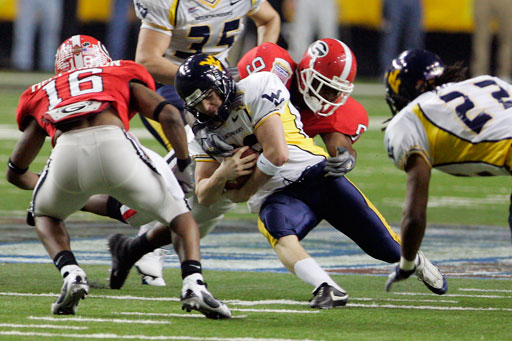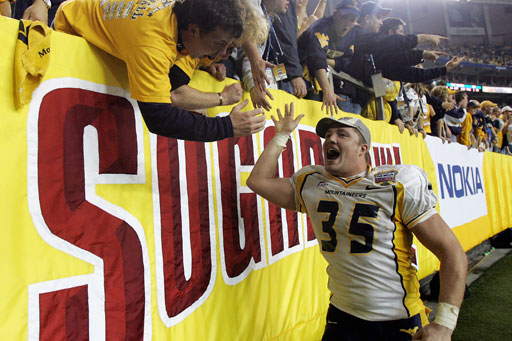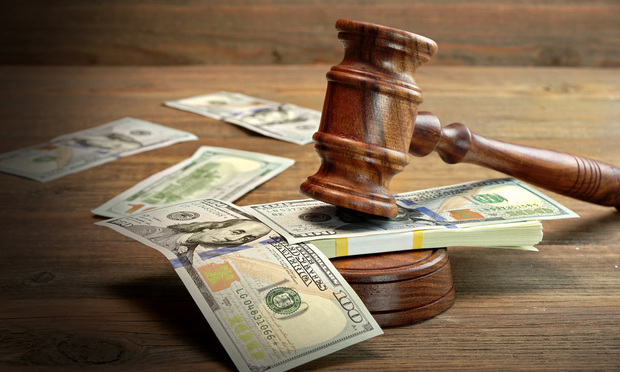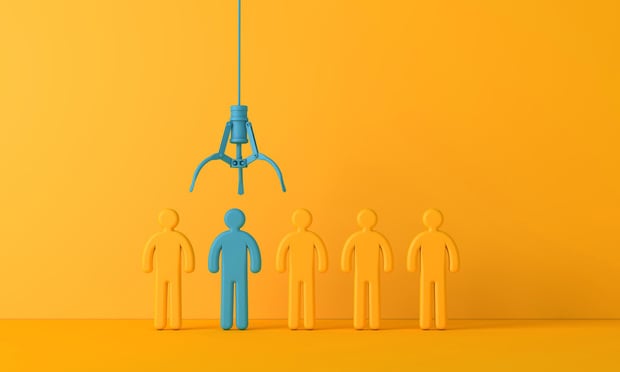By Elliott Laudeman, vice president, Insurance Underwriters Ltd.
Although it was only a Category 3 storm when it made landfall and didn't directly hit New Orleans, Hurricane Katrina turned the Big Easy into a living hell. It was at 3 a.m. on Aug. 29, 2005 that New Orleans changed–forever.
This is a reflection of the insurance loss suffered by the Sugar Bowl, some four months before the 71st annual football game was played. The events leading up to that game provide textbook material for insurance scholars on how to handle catastrophic claims.
Read on for a slideshow on how we went from disaster to game day.

Camped out in the Superdome after Katrina, August 2005
(Photo by Mario Tama/Getty Images)
First, the facts:
- The Sugar Bowl football game is played each year in the Superdome.
- The Sugar Bowl office is located in the Superdome.
- Vandalism and water, not wind, did most of the damage to the Superdome.
The story begins with New Orleans' order for mandatory evacuation on Sunday, Aug. 28, 2005. In spite of this, almost 20,000 residents did not leave and were “housed” in the Superdome as a “refuge of last resort.” This created a big problem for the Sugar Bowl offices, which were broken into by temporary residents looking for food, water and items of value.
Interior office damage
I personally visited the Superdome within a day or two after the Army evacuated the building. It looked like a war zone: water everywhere, human waste on the floor, toilets overflowing, holes in the roof, vandalism throughout and a smell that was indescribable.
I realized we had a multifaceted claim on our hands. I first tried to reach the office staffers, who had evacuated and were literally scattered across the U.S. Within a few weeks, however, they set up a temporary Sugar Bowl office in Houston and I began communicating with employees who could help with the adjusters and the settlement of the various claims.
Interior office damage to the “trophy room” included vintage photos and memorabilia
Communications were difficult with the insured in Houston and overworked adjusters and contractors. The situation in New Orleans was even more difficult with the lingering water, lack of electricity and limited phone and computer service. Access to the Superdome was also restricted, which made loss assessment more difficult. I set up a temporary office and home in Baton Rouge, a move that allowed me to continue operations. (Thank God for cell phones and text messages!)
In the wake of Katrina, the Superdome was untenable and the big question was whether it should be torn down or renovated. While this discussion was underway, the Superdome's major tenants, Tulane University Football and the New Orleans Saints, arranged to play their 2005 home games outside of New Orleans. It was finally decided to repair the Superdome and the repairs and renovations quickly began.
Paul Hoolahan, Sugar Bowl CEO (right), outside office during cleanup
Ultimately, the Saints announced they would be returning to New Orleans and over a year later, they played their first home game against the Atlanta Falcons on Monday Night Football on Sept. 25, 2006. The Saints won an electrifying game 23 to 3, before a packed house and record TV audience.
Fortunately, K&K Insurance, the Superdome's broker, had an experienced adjuster assigned to the vandalism (betterments and improvements plus contents) claim. Because no contractors were readily available, Scott Archer of Axis Adjusters itemized the replacement cost and issued checks based on his estimate, subject to future adjustments.
Sugar Bowl Director of Business Operations Kathy Garpard outside office during cleanup
By this time, the Sugar Bowl headquarters had moved from Baton Rouge to Houston and were operating with a makeshift staff and offices.
Sometime in September 2005, Sugar Bowl management decided to play the 2006 game which was part of the Bowl Championship Series, choosing the Georgia Dome as the site. This entailed moving the Sugar Bowl's office and staff to Atlanta for what turned out to be about a six-month period. In addition, two general membership meetings had to be held on site in November and December to familiarize the volunteer membership with the “lay of the land.” Management also had to make arrangements for members for seven days during game week. This included air transportation, hotels and meals for 79 active volunteer members.
In addition, team and official party hotels, entertainment, practice facilities and transportation to Atlanta had to be arranged and purchased.

Jan. 2, 2006: Game day! (AP Photo/Rob Carr)
As you can imagine, the extra expense was one of the first checks received by the Sugar Bowl. The full amount, about $250,000, was distributed in December and helped to defray the relocation costs.
In addition to the extra expense coverage, the Sugar Bowl also carried a game cancellation policy, written through Lloyd's of London. This policy, written through HCC Specialty Underwriters Inc., paid approximately $600,000 and included loss of income and/or costs necessary to relocate the game. The proceeds of this policy plus the extra expense coverage reimbursed the insured for most all of the relocation expenses.

Final score: West Virginia 38, Georgia 35 (AP Photo/John Bazemore)
After many days and months of planning, travel and hard work, the two teams were chosen for the 71st annual Sugar Bowl game: West Virginia vs. Georgia. It was an exciting game and West Virginia upset the home standing Bulldogs, 38 to 35. ESPN ranked the 2006 Sugar Bowl game as No. 6 on its list of the best Bowl games of the BCS era.
With adequate insurance and a hard-working staff, the Sugar Bowl tradition was carried forward one more year. “It was just another day at the office,” said Paul Hoolahan, the Sugar Bowl CEO, as the final whistle blew.
Want to continue reading?
Become a Free PropertyCasualty360 Digital Reader
Your access to unlimited PropertyCasualty360 content isn’t changing.
Once you are an ALM digital member, you’ll receive:
- Breaking insurance news and analysis, on-site and via our newsletters and custom alerts
- Weekly Insurance Speak podcast featuring exclusive interviews with industry leaders
- Educational webcasts, white papers, and ebooks from industry thought leaders
- Critical converage of the employee benefits and financial advisory markets on our other ALM sites, BenefitsPRO and ThinkAdvisor
Already have an account? Sign In Now
© 2024 ALM Global, LLC, All Rights Reserved. Request academic re-use from www.copyright.com. All other uses, submit a request to [email protected]. For more information visit Asset & Logo Licensing.












